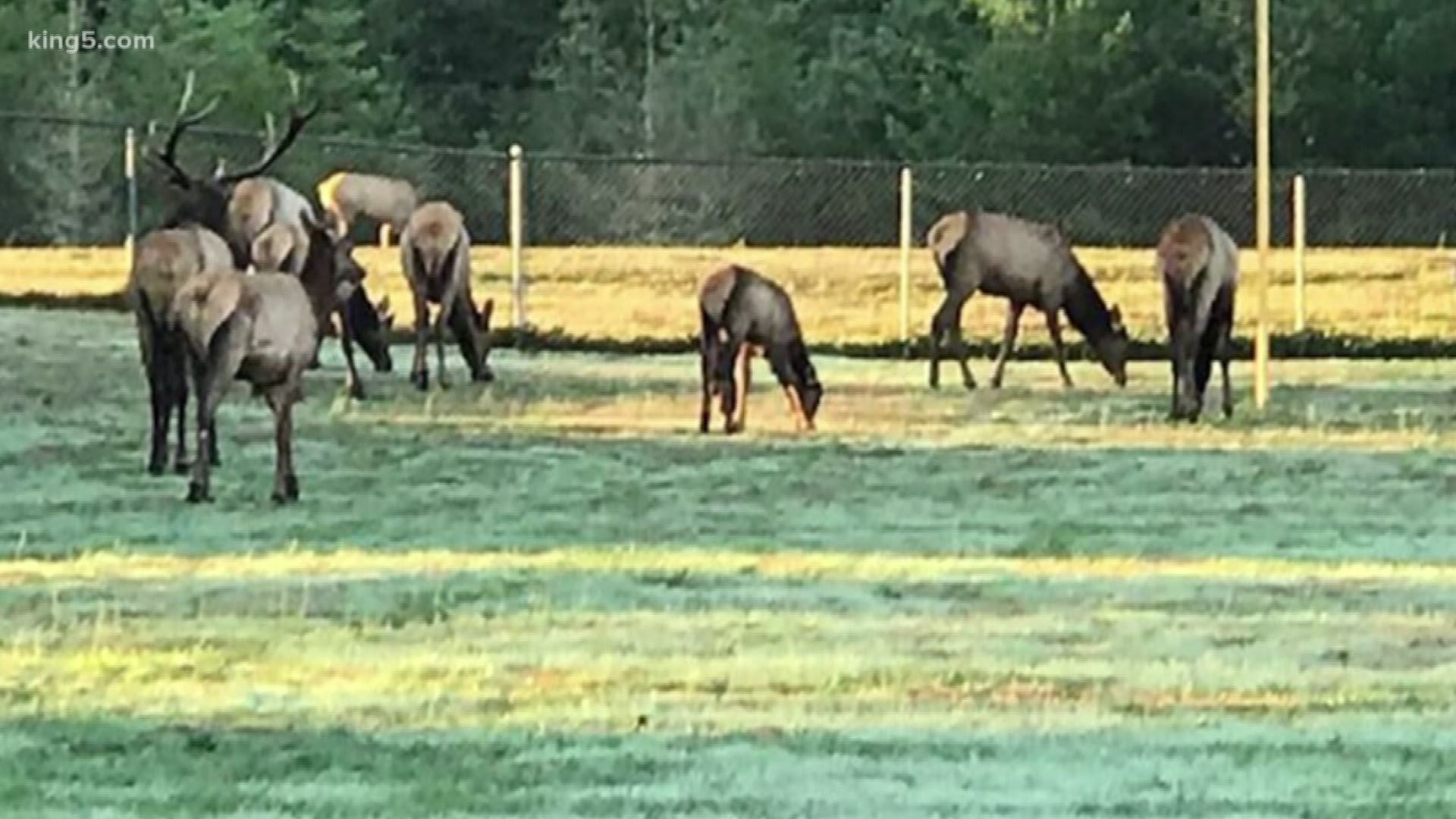SEDRO-WOOLLEY, Wash. — The story of elk in the Skagit Valley is a contentious one, and the growing herds have both critics and celebrants.
For some, there are too many elk, creating dangerous situations for drivers and kids.
"I started to apply the brake and they just ran out in front of me and everybody in their backpacks came forward. I had to pull over and make sure everybody was OK," said Sedro Wooley School District bus driver Kim DeVaney. "They run around and they are dangerous and unpredictable. I deal with them on a regular basis."
DeVaney isn't the only one who works with locals schools and wants action taken to reduce the number of elk. The Concrete school district has seen its fair share of damaged property, from fences to baseball fields. The safety of kids playing outside with elk nearby, however, is the greatest concern.
"You can be standing from me to you away and those bulls will come charging through there. That is what my concern is with little kids out here at the same time," said Concrete School District superintendent Wayne Barrett. "We are self-insured. If something like that happens, we are going to be on the hook liability-wise. Somebody needs to be responsible for helping us with limiting the size of that herd. It is just getting too big."
Spread among the Elk Crossing signs is a sign outside a former dairy farmer's home that reads: "Elk Damages, $1.4 mill to farms, homes, vehicles."
Critics say herd management by the Washington Department of Fish & Wildlife isn't working.
"The problem is getting worse every year, not better, so they need to change what they're doing," said Skagit County Farm Bureau president Bill Schmidt.
Elk numbered just a few hundred in the 1990s. Hunting stopped to protect the remaining elk and others were brought in from southern Washington. Today, the core group near Sedro-Woolley and Concrete numbers about 1,500.
For some, the increased population is a reason to celebrate.
"We have a spiritual connection, a cultural connection and we actually celebrate the diverse nature in both activities and species diversity, including the human-wildlife interface," said Swinomish Tribe Hunting & Gathering program manager Tino Villaluz. "We respect the community. We respect the producers and the diversity, the economic diversity. We have made a commitment to work with everybody and I think we’ve made considerable progress in that area."
"The tribe is very blessed to have wildlife, elk, deer, bear, and eagles in Skagit Valley. We are very fortunate to have these populations continue to thrive," added Upper Skagit Indian Tribe policy manager Scott Schuyler. "It’s a fine line that we have to walk and the commitment is there for the tribe to continue to meet with the Skagit tribes and the county and the local community to find a solution."
Since 2016, the elk population has increased by 20%, which is seen by the state as a positive trend in the right direction, despite opposition.
"We have full-time staff. We have a group of people that regularly needs to manage this herd," said WDFW regional biologist Robert Waddell. "This is a big topic we discuss regularly. How can we help these affected property owners? How can we help mitigate for this damage?"

